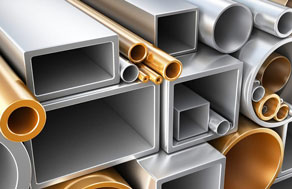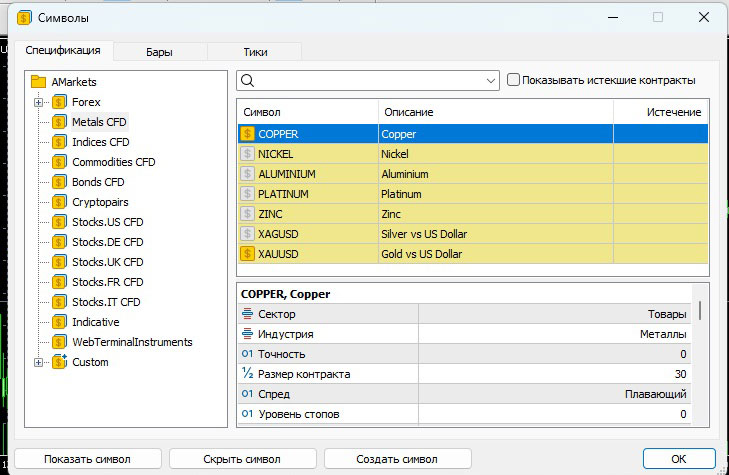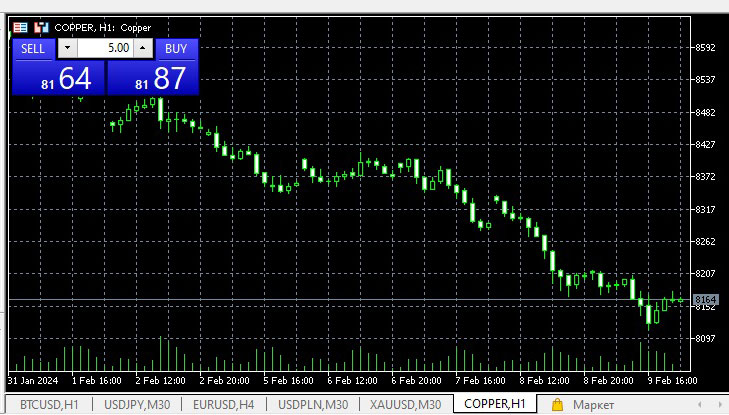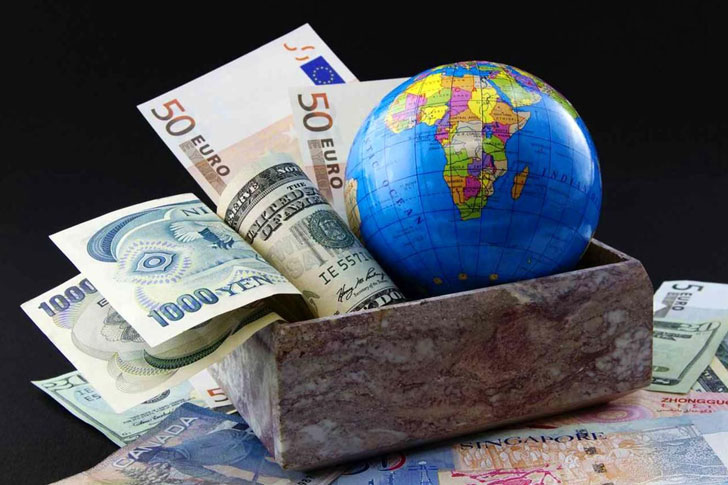Trading non-ferrous metals on the stock exchange
Futures are one of the most popular assets traded on the exchange today.

This category has its favorites, primarily gold and precious metals such as silver and platinum.
But besides precious metals, the metatrader trading platform has other assets from the metals category; they can also be used for profitable trading on the exchange.
If you paid attention, now in the trading platform of almost every broker, in addition to precious metals, you can also find non-ferrous metals - copper, nickel, aluminum and zinc.
Terms of trade for copper, nickel, aluminum and zinc
In order to start trading non-ferrous metals, you first need to add them to the “ Market Overview ” window; to do this, right-click and select “Symbols” from the drop-down menu, and then activate the asset you need in the Metals folder:

A detailed description of adding new assets to the Market Watch window is described in the article - https://time-forex.com/vopros/dobawit-aktiw
Once the desired non-ferrous metal has appeared in the market overview, it is advisable to add it to the chart, this will allow for a technical analysis of the existing trend:

The cost of non-ferrous metals is measured in US dollars per ton, with each asset having its own lot size.
1 lot of copper is equal to 30 tons
1 lot of nickel – 10 tons
1 lot of aluminum – 50 tons
1 lot of zinc – 50 tons
the metatrader 5 trading platform , since the fourth version sometimes lacks such assets.
Non-ferrous metals are traded on such world exchanges as:
- Copper: LME (London Metal Exchange), COMEX (Chicago Mercantile Exchange)
- Nickel: LME, SHFE (Shanghai Futures Exchange)
- Aluminum: LME, LME (London Metal Exchange), SHFE
- Zinc: LME, LME (London Metal Exchange), SHFE
In this case, futures contracts with a fixed delivery date are used; in order not to constantly monitor the expiration date of the contract , it is recommended to choose non-ferrous metals that are traded using CFDs .
CFD on metals is an easier and more convenient way to make futures transactions.
Non-ferrous metals trading strategy
Trading strategies are mainly based on news that reflect factors affecting the price of non-ferrous metals.

In this case, factors causing a change in the price of non-ferrous metal may be:
Supply and demand:
- Copper: Used in electronics, energy, construction and manufacturing.
- Nickel: Used in the production of stainless steel, batteries and electric vehicles.
- Aluminum: Main applications are construction, aviation and packaging.
- Zinc: Used in galvanizing, battery manufacturing, tire manufacturing and several other industries.
Economic forces:
- Global growth: Increases demand for metals.
- Inflation: May cause metal prices to rise.
- Economic crisis: Reduces demand for non-ferrous metals and causes prices to fall.
Geopolitical factors:
- Wars: Can disrupt the supply of metals if they affect producing countries.
- Sanctions: increase costs and provoke shortages.
- Trade wars: May cause metal prices to fluctuate.
To trade non-ferrous and precious metals, it is recommended to use the following brokerage companies - https://time-forex.com/vsebrokery/brokery-zoloto-serebro


